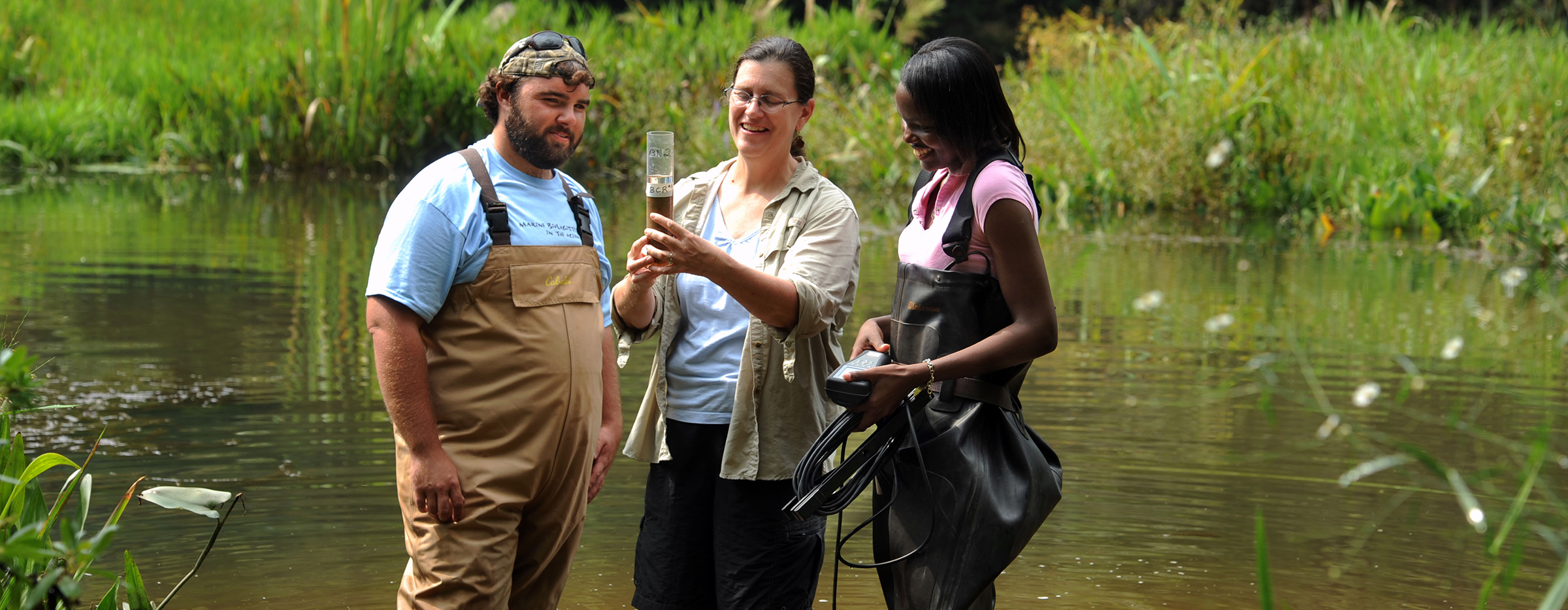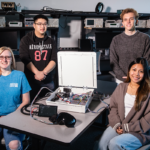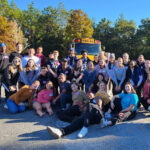UWF Students Research Highlighted at Science Conference
Pensacola Beach – The University of West Florida’s Hal Marcus College of Science and Engineering and Center for Environmental Diagnostics and Bioremediation for the first time were sponsors of the biannual meeting of the Gulf Estuarine Research Society, where more than 100 research projects were presented, including many from UWF students.

The meeting, presented jointly by the Gulf Estuarine Research Society and two regional chapters of the Society for Wetland Scientists, was held Nov. 3-5 at the Hilton Garden Inn on Pensacola Beach.
“UWF had three undergraduate students, six graduate students and two post-docs make presentations at the meeting,” said Dr. Jane Caffrey, a professor in the Center for Environmental Diagnostics and Bioremediation. “There were 109 abstracts total, so that’s a good percentage of the total presentations that were made.”
Among those who presented at the conference was UWF graduate student Rachel Capps.
“My oral presentation was on my research for my master’s thesis.” Capps said. “I am studying the role of nitrogen fixation in the seagrass bed in Santa Rosa Sound. This is an important biogeochemical process that is responsible for the conversion of dinitrogen to organic nitrogen.”
Undergraduate student Melissa Brock’s presentation centered on bacterioplankton and phytoplankton, research she has been working on since the summer of 2015.
“The goal of the project was to determine if there is a seasonal response of bacterioplankton and phytoplankton growth to crude oil water accommodated fractions,” Brock said. “A secondary goal was to determine what environmental factors contribute to the inhibition of growth.”
Brock also presented her research at the Ocean Sciences Meeting this year in New Orleans and at the Spring Student Symposium at UWF. She will also make a presentation at the Aquatic Sciences Meeting next year in Honolulu.
In addition to UWF, researchers from University of Texas, Texas A&M, Louisiana State University, University of Southern Mississippi, Dauphin Island Sea Lab, Florida International University, University of Central Florida and University of Florida were among those represented at the meeting.
“It was a really good opportunity to meet people from different regions and scientific disciplines,” Caffrey said.
The event also featured a panel discussion for undergraduate students who want to go on to attend graduate school, and for those entering the job market.
“This was designed to help both undergraduate and graduate students,” Caffrey said. “Students who were interested in going to graduate school could get useful information on how to make the most of their experience there. For students who are finishing, whether they are in graduate school or not, heard many helpful tips for entering the job market.”
Florian Cesbron, a post-doctoral researcher, gave a presentation that focused on the first results from one year of biogeochemical sampling before artificial reefs were deployed in the shallow shelf off Pensacola.
“During this year, data were collected to establish baseline values at the locations selected at future reef sites focusing on pelagic and benthic primary production and nutrient exchange across the sediment and the water,” Cesbron said.
Caffrey said UWF faculty also led field trips as part of the meeting, including to Fort Pickens to learn about the shorebird communities and tour the fort. Another field trip provided tours of restoration projects in the Pensacola Bay watershed.
“Field trips were another way to highlight things going on in this area and some of the activities that UWF is involved in,” Caffrey said.



